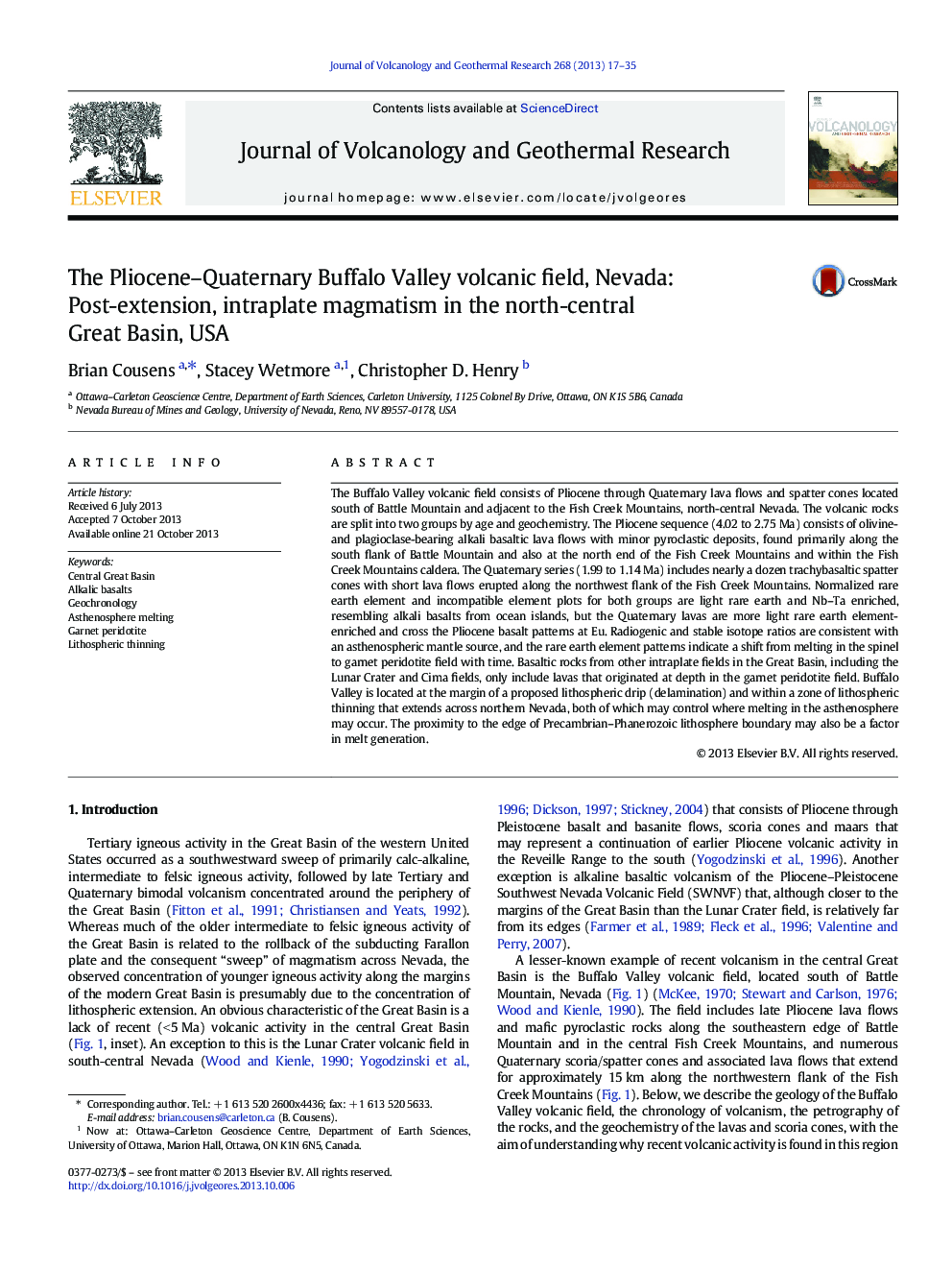| کد مقاله | کد نشریه | سال انتشار | مقاله انگلیسی | نسخه تمام متن |
|---|---|---|---|---|
| 4713042 | 1638353 | 2013 | 19 صفحه PDF | دانلود رایگان |

• One of only two Quaternary volcanic fields in the central Great Basin.
• Pliocene alkali basalt lava sequences and Quaternary trachybasalt spatter cones and flows.
• Quaternary basalts derived by lower degrees of melting in garnet peridotite field, see deepening of melting with time.
• Isotopic data indicate melting of asthenospheric mantle, little or no contribution from lithosphere.
• Mantle melting driven by lithospheric delamination, thinning of lithosphere, asthenospheric upwelling.
The Buffalo Valley volcanic field consists of Pliocene through Quaternary lava flows and spatter cones located south of Battle Mountain and adjacent to the Fish Creek Mountains, north-central Nevada. The volcanic rocks are split into two groups by age and geochemistry. The Pliocene sequence (4.02 to 2.75 Ma) consists of olivine- and plagioclase-bearing alkali basaltic lava flows with minor pyroclastic deposits, found primarily along the south flank of Battle Mountain and also at the north end of the Fish Creek Mountains and within the Fish Creek Mountains caldera. The Quaternary series (1.99 to 1.14 Ma) includes nearly a dozen trachybasaltic spatter cones with short lava flows erupted along the northwest flank of the Fish Creek Mountains. Normalized rare earth element and incompatible element plots for both groups are light rare earth and Nb–Ta enriched, resembling alkali basalts from ocean islands, but the Quaternary lavas are more light rare earth element-enriched and cross the Pliocene basalt patterns at Eu. Radiogenic and stable isotope ratios are consistent with an asthenospheric mantle source, and the rare earth element patterns indicate a shift from melting in the spinel to garnet peridotite field with time. Basaltic rocks from other intraplate fields in the Great Basin, including the Lunar Crater and Cima fields, only include lavas that originated at depth in the garnet peridotite field. Buffalo Valley is located at the margin of a proposed lithospheric drip (delamination) and within a zone of lithospheric thinning that extends across northern Nevada, both of which may control where melting in the asthenosphere may occur. The proximity to the edge of Precambrian–Phanerozoic lithosphere boundary may also be a factor in melt generation.
Journal: Journal of Volcanology and Geothermal Research - Volume 268, 1 December 2013, Pages 17–35